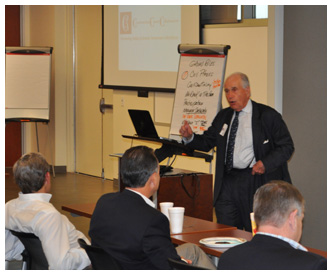Construction in Crazy Time
 I don’t know about you, but it seems to me that we are in “crazy time”, not only in politics, but also in the construction industry. Makes me wonder whether they are linked.
I don’t know about you, but it seems to me that we are in “crazy time”, not only in politics, but also in the construction industry. Makes me wonder whether they are linked.
The Associated General Contractors of America (AGC) report on the May 2012 construction job numbers show that over 50% of the 337 US Metro areas gained new jobs over the past year. That is great news for the folks working in those metro areas. At the same time, AGC reports that in the other half (48.7%) of the metro areas, jobs in the construction industry are still declining. (You can see how your Metro is doing by referring to their List of Construction Employment by Metropolitan Area or Division, May 2011-May 2012.)
We recently reported that there are major shortages of skilled labor in Arizona and that there are thousands of jobs going unfilled in some other markets. [node:read-more:link]


 The housing numbers came out last week and Bloomberg News reported on the shortages of skilled carpenters and construction workers in the hot, hot, hot Phoenix housing market. According to
The housing numbers came out last week and Bloomberg News reported on the shortages of skilled carpenters and construction workers in the hot, hot, hot Phoenix housing market. According to  Peter Caulfield, a correspondent for the
Peter Caulfield, a correspondent for the  The employment numbers released this month were less than exciting, and we went looking for a broader view of those numbers for the construction industry so that we could put them into context.
The employment numbers released this month were less than exciting, and we went looking for a broader view of those numbers for the construction industry so that we could put them into context. I have recently come across a couple of interesting viewpoints on the world of work.
I have recently come across a couple of interesting viewpoints on the world of work. A recent press release from
A recent press release from  The current job numbers are beginning to scare me a little. The overall unemployment rate rose to 8.2 in
The current job numbers are beginning to scare me a little. The overall unemployment rate rose to 8.2 in  This is
This is 
 While driving from San Antonio to Houston this week, I came up on two cars that seemed to be traveling slower than the rest of us, and they were swerving from their lane over into mine. Usually when I run up on someone who acts like they might be drunk I speed up and go around them so that they don’t cause a problem. This was unusual since there were two cars traveling almost in a caravan down I-10.
While driving from San Antonio to Houston this week, I came up on two cars that seemed to be traveling slower than the rest of us, and they were swerving from their lane over into mine. Usually when I run up on someone who acts like they might be drunk I speed up and go around them so that they don’t cause a problem. This was unusual since there were two cars traveling almost in a caravan down I-10.